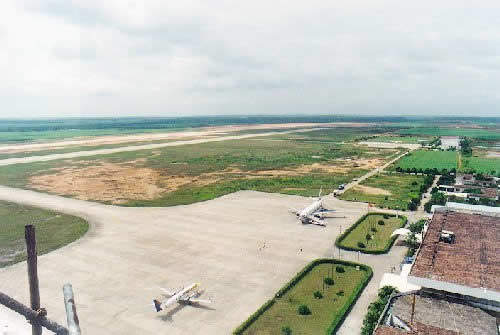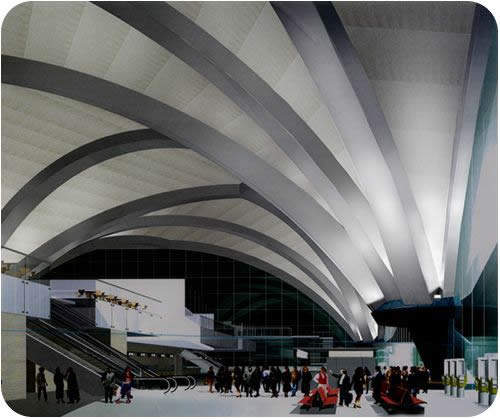Beihai Fucheng Airport is located in the Guangxi Province in southern China. Beihai is an open coastal city and special economic zone west of Hong Kong near the border with Vietnam, and is also the location of a major seaport.
The Airport was first established in 1987 and was expanded in 1994 to cater for the needs of larger passenger flow. The airport now covers an area of 3.6km².
Beihai Fucheng Airport has opened scheduled flights to most major cities in China including Beijing, Shanghai, Guangzhou, Shenzhen, Changsha, Chengdu, Chongqing, Xian, Guiyang and Hangzhou.
On 10 July 2007 the biggest passenger terminal building of Beihai Fucheng Airport in Guangxi Province was put into use. Covering an area of 27,800m² (about seven acres), the passenger terminal building receives the throughput of 2,700,000 person times each year.
The airport design is intended to be path breaking, and involves an innovative front-back steel structure as a roof, which is designed to maximise natural lighting. Among the items of equipment installed in the airport are: navigational aids: VHF communications equipment; meteorological equipment; power systems; airfield ground lighting; airbridges; integrated baggage handling; X-ray and security systems; specialist vehicles and MSSR.
Beihai Airport design
The government of Beihai requested Llewelyn Davies Yeang Design Company to apply a new conceptual style of design to the Beihai Airport. The company worked jointly with Zhongnan Airport Design and Research Institute to provide the overall concept and design of specific imported products and materials, whereas the Chinese institute will take care of the design, inspection and approval of local products.
The new airport uses a front-back steel structure for its roof so that the most effective natural lighting can be achieved. The roof is composed of a triangular structure curving from 2D to compound 3D shape. It is open from the front part of the building down to the entrance of the hall. The back part is divided into two floors, with a waiting section and a commercial area.
An electronic timepiece can be seen from anywhere for the convenience of passengers and the elevator for the disabled is also in place.
This building is renowned as the ‘gem brooch’ which brings great influence to the economic development of Beihai City.
Construction timescale
The delivery of equipment was made in three phases between 1998 and 2000. The initial delivery in phase 1 was made within three months of the contract becoming effective in March 1998. This consisted of the equipment required make the airport’s new 3,300m runway operational. The final two phases were completed in April 2000.
The new domestic terminal opened for business in July 2007.
Expansion
The expansion of Beihai Airport is part of China’s modernisation programme to meet the increasing demands from passengers and cargo. China has experienced average growth of 20% in passenger and cargo transport every year since 1980. There are about 100 flights a week linking Beihai with the capital Beijing, and other major cities such as Shanghai, Xian, Chengdu, Guiyang, Guangzhou, Shenzen, Zhuhai and Hong Kong.
The construction of the new runway equipped the airport for category 1 operations. The runway was been extended from 1,800m to 3,200m and can now handle Boeing 777s and other modern aircraft. The expansion of the airport has allowed the introduction of new routes and scheduled services to 16 new destinations have begun.
Beihai Airport lead contractors
Thomson-CSF Airsys ATM signed a $21.6m contract for equipment and services for the development of Beihai Airport.
The contract became effective in March 1998, the equipment in the contract comprises: navigational aids: VHF communications equipment; meteorological equipment; power systems; airfield ground lighting; air bridges; integrated baggage handling; X-ray and security systems; specialist vehicles and MSSR.
Thomson-CSF Airsys ATM helped the Beihai Airport authorities in drawing up specifications for equipment. The delivery of the first equipment took place after just three months. The installation of the equipment was carried out by the customer with supervision by Airport Group specialist engineers. Jetway was awarded a contract to supply airline passenger boarding bridges at the new airport.










